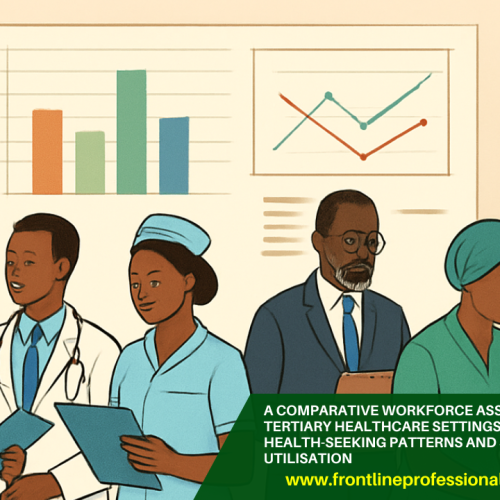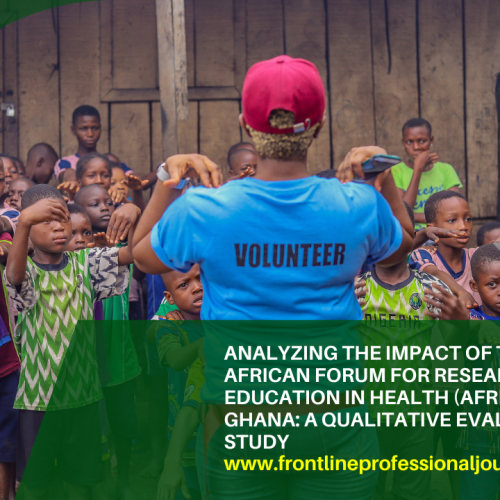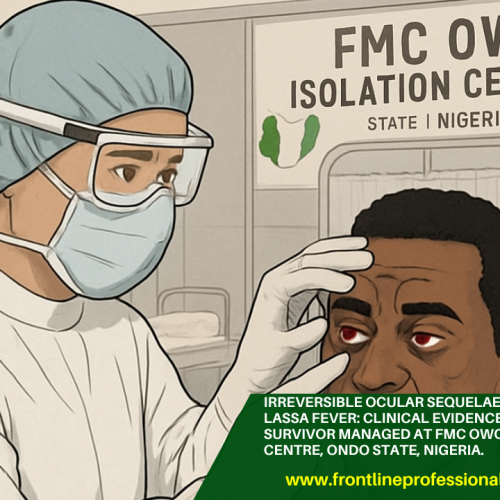Akaninyene Mark
Citation: Akaninyene Mark (2025) Patterns, Risk factors, Perpetrators and Consequences of sexual practices among Nigerian Teenagers. Frontline Professionals Journal, 2(1), 54–77.
Abstract
Background: Sexual practices among teenagers are a significant public health concern globally, with Nigeria being no exception. The World Health Organization (WHO) defines adolescence as the period
between 10 and 19 years of age, during which individuals undergo significant physical, emotional, and
social changes. These changes often influence their attitudes and behaviours towards sex. In Nigeria, the
South-South region has been identified as having one of the highest prevalence rates of HIV/AIDS and
other sexually transmitted infections (STIs) among young people. The region has also been reported to have high rates of teenage pregnancy, sexual violence, and other negative sexual health outcomes. This study aims to assess the patterns, risk factors, perpetrators, and consequences of sexual practices among senior high school students in Akwa Ibom state South-South region of Nigeria. By examining these factors, this study seeks to contribute to the existing body of knowledge on adolescent sexual health in Akwa Ibom state and provide insights for policymakers, healthcare providers, and other stakeholders working to promote healthy sexual behaviors and outcomes among young people in the region.
Methods: This was an analytical cross-sectional comparative study involving 740 public senior secondary adolescent students (14-19 years) from 4 selected schools. An adapted, self-administered pre-tested, semi-structured questionnaire was used for data collection. Participants were selected using multi-stage sampling. Data analysis was carried out with Statistical Package for Social Sciences (IBM SPSS statistics) version 27 software. Logistic regression analysis was used to determine the factors associated with sexual practices among adolescents, and statistical significance at p value ≤ 0.05.
Results: The mean age of respondents from the urban schools was 17.0 ± 1.52 years compared to 16.0 ±
1.19 years from the rural schools(p<0.001). There was a statistically significant association in both settings
among respondents who were breast caressed or had unwelcomed kissing and sexual intercourse. In the
rural schools, 60.0% compared to 37.0% of respondents in urban schools who were breast caressed reported to have experienced increased incidents of sexual intercourse compared to those who were not breast caressed (p<0.007). Also, in the urban schools, 56.5% of respondents who had unwelcomed kissing
compared to 54.9% in rural schools have experienced sexual abuse. Moreover, there was a statistically
significant association between genital touching and sexual intercourse among respondents in urban schools (χ2=3.86, p=0.005). In the urban schools 52.8% compared to 47.3% in the rural schools who were exposed to genital touching were reported to have had sexual intercourse. The proportion of respondents with unwanted pregnancy was higher in the rural public senior secondary schools, 52 (32.5%), compared to the urban, 49 (28.8%), (χ2=0.53, p= 0.469). The proportion of respondents who had abortion as a consequence of sexual abuse was also greater in the rural 41 (25.6%) compared to 35 (20.6%) from the urban (χ2=1.18, p= 0.277). A similar proportion of respondents in both setting, 24.3% and 24.4% respectively had STI as a consequence of sexual abuse. Rural schools respondents had significantly higher consequences of sexual practice compared to urban schools respondents. A slightly higher proportion of respondents in the urban, 43 (25.4%) agreed to have knowledge of HIV and that sexual abuse consequence could result in HIV infection compared to 38 (23.7%) in the rural (χ2=0.11, p= 0.745). A higher proportion of respondents in urban, (28.1%) compared to (24.9%) from the rural mentioned school mate as the commonest reported perpetrators of sexual abuse. This was statistically significant (χ
2=11.65, p= 0.040). Conversely, a slightly higher proportion of respondents in rural schools, (27.3%) compared to (26.5%) from the urban schools were mentioned Boyfriend/ Girlfriend. In the rural schools, respondents who had sex for monetary gain had 4.00 times likelihood of experiencing sexual practice compared to those who did not (OR=4.00; 95% CI: 2.549-6.275) and 2 times more likelihood in the urban schools compared to those who did not (OR=2.00; 95% CI: 1.695-3.962). In the urban schools, respondents with peer pressure influence were 2.66 times more likely to have experienced sexual practice compared to those without (OR=2.666; CI:1.729-4.113) and 2 times likelihood among rural schools compared to those who did not (OR=2.00; 95% CI: 1.729- 4.113). In the rural schools, respondents for whom poverty was the reason for engaging in sexual intercourse were 1.909 times more likely to have experienced sexual practice compared to those who poverty was not (OR=1.909; 95% CI: 1.249-2.917) and 1.64 times likelihood in the urban schools compared to those who poverty was not (OR=1.640; 95% CI: 1.083-2.483).
Conclusion: Sexual practices among Nigerian teenagers are a pressing public health concern, with far-reaching consequences for their physical, emotional, and social well-being. The patterns of sexual practices among Nigerian teenagers are influenced by a complex interplay of factors, including sociocultural norms, peer pressure, sex for money, poverty and lack of comprehensive sexuality education. Early initiation of sexual activity is common among Nigerian teenagers, with many engaging in risky sexual behaviors such as unprotected sex and multiple partnerships. Risk factors for early sexual initiation and risky sexual behaviors include poverty, low educational attainment, and exposure to violence and abuse. Perpetrators of sexual violence against Nigerian teenagers include family members, friends, and authority figures, highlighting the need for a comprehensive approach to prevention and response. The consequences of sexual practices among Nigerian teenagers are severe and long-lasting, including unintended pregnancy, sexually transmitted infections (STIs), and mental health problems. It is recommended that comprehensive sexuality education should be integrated into school curricula and community-based programs to provide teenagers with accurate and age-appropriate information about sexual health and relationships. Policies and programs should address the root causes of risky sexual behaviors, including poverty, inequality, and gender-based violence. Access to youth-friendly sexual and reproductive health services, including contraception and STI testing and treatment, should be expanded and strengthened. Laws and policies should be enforced to prevent and respond to sexual violence against teenagers, and perpetrators should be held accountable.
Keywords: sexual practices, risk factors, consequences, adolescents, perpetrators







